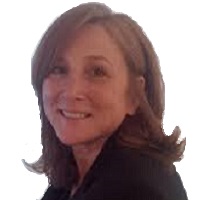 By Sarianne Gruber
By Sarianne Gruber
Twitter: @subtleimpact
“The need to see patients as people is very real. It is an ideal that will drive healthcare transformation.” Mandi Bishop (@MandiBPro) Founder & CEO of Aloha Health. Follow them on Twitter @Aloha_Health.
Mandi Bishop prefers to be called the Chief Evangelist rather than the Chief Executive Officer. Her new start-up, Aloha Health, launched this past July and she is making considerable traction. I caught up with Ms. Bishop in New York at the MedStartr Momentum, an Equity Crowd Challenge, where she won the People’s Choice award. Congratulations to Mandi and the Aloha Health team!!
Here is an edited transcript of our conversation.
What makes Aloha Health “unique” as a healthcare data and analytics company?
Bishop: Aloha Health was designed with a singular mission – to allow providers, care managers, and people who are participating in the patient’s care to “view” a patient as a person. All contextual information about “you” is what makes you unique. This view of “clinically relevant social determinants” is important because it impacts your ability to manage your health on many levels such as your ability to follow instructions, how you interpret information, who you trust and how you engage. It is really important because we [providers] are all pressed for time. We are already seeing the patient revolution and hearing a lot of talk about engaging patients. Aloha Health is providing an opportunity to see patients as people without imposing additional time. We give you specific insights to help you see your patients as people.
How do you see non-clinical insights adding value to value-based care metrics?
Bishop: As our industry moves from volume to value and from fee for service to more programs like comprehensive joint replacement and bundled payment methodologies such as ACOs models. These types of shared savings programs involve shared risk. When you have a capitated payment structure where you are being asked to manage the care of an entire population, including people with a set number of funds. Obviously, you have to find ways to be very effective in that care delivery. You have to understand all the things about that population, and each patient as an individual to help him or her to help themselves become healthier. In turn, this saves money for organizations through improved health outcomes.
What types of data would be considered as the “other 95%”?
Bishop: The first 5% of the health data happens in the clinical setting. The remaining data is what we refer to as the “other 95%” and is what happens at home, at work, and in the environment. It is also about one’s mental health, state of mind and one’s situational context. All this information is about who you are contextually. How you live can help you as an individual with the inherent benefits of giving the provider and payer an understanding of who you are. From a value-based care perspective, we have to become more efficient and more effective. As a healthcare industry, it’s imperative that we understand all the barriers and challenges that patients have in order to help them manage their own health. What is Aloha Health doing? Aloha Health is shedding light on all of the other the data points.
Would you consider your approach similar to databases like Claritas, Prizm, and Nielsen lifestyle data to better understand consumer behavior? What types of data do you intend to use?
Bishop: It is similar, though I can’t disclose the data sources. I can share that we have a baseline dataset comprised of two commercially available data source are similar to what you mentioned and one open data set. We are going to leverage as much open data that is currently available. The NOA puts out climatology data, so you can deduce the effects of weather patterns on your asthmatic patients. Another benefit is being able to take the weather patterns in conjunction with the neighborhood safety patterns. Traffic patterns and the availability of public transport can predict not just readmissions but, for someone who is diabetic and asthmatic, you might want to predict how or when they are going to be able to get exercise outside. Community data like healthcare is publicly available at the hyper-local level. Aloha Health’s three core datasets consist of one of that is purely commercial, one which layers the commercial data within health data and the third is environmental.
How will your database align with population health?
Bishop: We intend to develop what the clinical relevant social determinants are, and what is clinically relevant to each of the disease states. We are starting to look at diseases that are aligned very well with population health and care management programs such as diabetes and cancer. When we talk about diabetes, we look holistically at all of the factors that would be clinically relevant to a diabetes patient. Our conjecture is that it is not enough to know whether a diabetic is insulin dependent or non-dependent or whether the patient is prediabetes or has diabetes. At Aloha Health we want to know which social determinate factors are clinically relevant to managing the patient in his or her entirety.
How will the “clinically relevant social” insights be accessed by the provider?
Bishop: All information will be available via web service. Our social determinant database will be integrated on to the EHR plus a care management platform. The provider will be able to purchase insights on all his patients as a data overlay, and the information will be integrated into the EHR as an added custom workflow. It is a service where you, as the patient, go to the doctor, and your doctor will be able to pull up your chart along with custom patient and community level insights for every encounter.
Learn more about Mandi Bishop and her team at Aloha Health.
